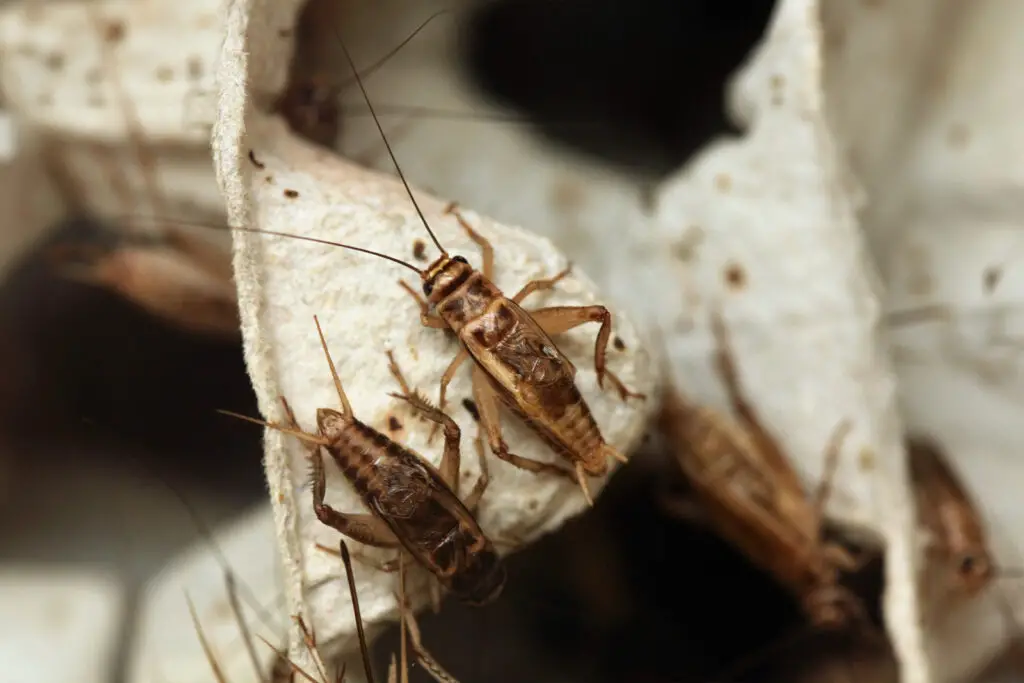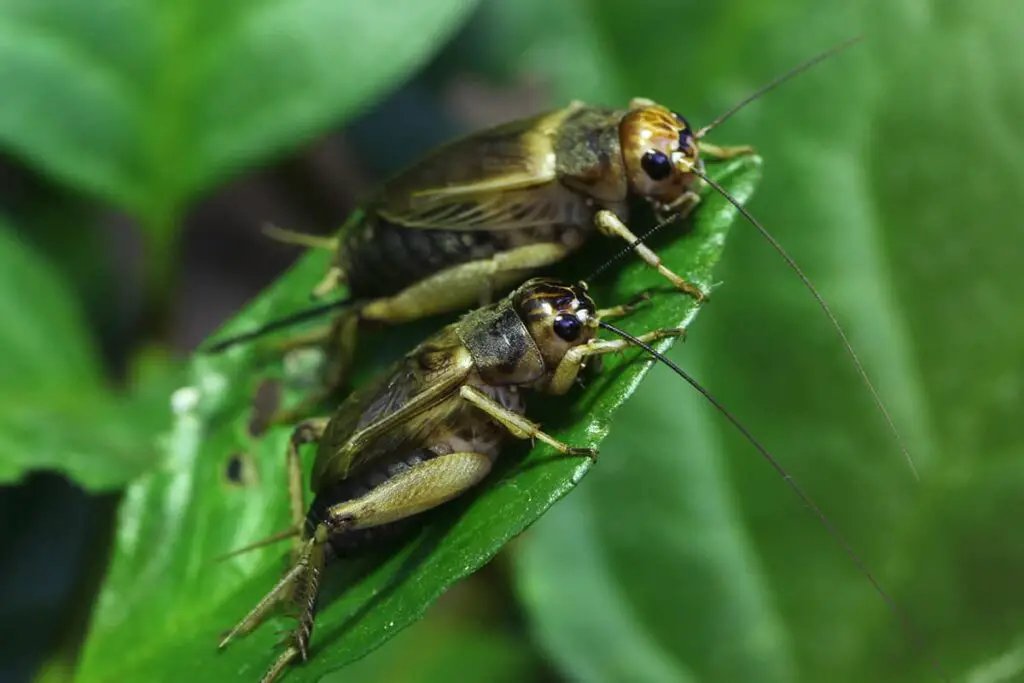
When I first considered keeping crickets as pets, I was intrigued by their simplicity and the minimal care they required. Crickets are fascinating creatures, not just for their chirping serenades but also for their ease of care, making them an excellent choice for both novice and experienced pet enthusiasts. As someone with a keen interest in these chirping insects, I’ve realized that not all crickets are created equal when it comes to being ideal household companions.
In my journey through the world of pet crickets, I discovered that some types are more suitable for captivity than others. For instance, the common house cricket is a popular choice due to its widespread availability and the ease with which it can be cared for. On the other hand, black field crickets are praised for their distinctive sound and can be trained using odors.
Selecting the right type of cricket is much like picking any other pet; you need to consider the care involved, the environment they thrive in, and the unique characteristics they may possess. I’ve learned that for a fulfilling experience, it’s essential to provide them with a comfortable habitat that includes good ventilation and a secure setup to prevent escapes. By understanding the specific needs of different cricket species, I’m confident in finding the right match for anyone interested in these intriguing little creatures.
Understanding Cricket Species
When I’m considering which types of crickets might make the best pets, I focus primarily on their care requirements and behaviors. Let’s explore some of the species popular for keeping as pets.
House Crickets
Latin name: Acheta domesticus
House crickets are the most common type that I recommend for beginners. They are easy to care for and have a pleasant chirping sound. These crickets usually live about 8 to 10 weeks and can be kept in simple enclosures with adequate food and moisture.
Field Crickets
Latin name: Gryllus spp
Field crickets are similar to house crickets but are often more robust and active. They require a bit more space than house crickets, and they thrive in an enclosure that mimics their natural habitat. They’re also known for their chirping, which is a result of males trying to attract mates.
Banded Crickets
Latin name: Gryllodes sigillatus
Banded crickets are valued for their longer lifespan and are often noted for being less aggressive than other cricket species. Their care is quite straightforward, but they do require a steady temperature to thrive. Banded crickets are a great choice if I’m looking for pet crickets that are less prone to perish in fluctuating conditions.
Cricket Care Essentials
When it comes to cricket care, I focus on creating an environment that meets their specific needs in habitat, diet, and climate control.
Habitat Requirements
My pet crickets require a comfortable home, which means a tank or enclosure with proper ventilation. I typically use a substrate such as soil or newspaper, and I always make sure to include a secure lid to prevent escape attempts. Proper tank setup is essential for their well-being and I often refer to a comprehensive guide on how to keep crickets as pets for detailed instructions.

Diet and Nutrition
For nutrition, crickets are omnivores. I usually offer a mix of fruits, vegetables, and grains, as well as commercial cricket food for a well-rounded diet. Providing a variety of foods is important to ensure they receive all necessary nutrients. Tips on what exactly to feed them can be found in guides like the one on cricket facts and keeping pet crickets.
Temperature and Humidity Control
I’ve learned that controlling the temperature and humidity in the cricket enclosure is crucial. Crickets thrive in a warm environment, ideally between 75 and 90 degrees Fahrenheit. Humidity should be moderate, and I use a hygrometer to monitor it. Details on temperature’s influence on breeding and day-to-day activities are elaborated in the beginner’s guide to keeping your own pet cricket.
Benefits of Keeping Crickets
When I discuss pet crickets with others, I often find myself highlighting two particular benefits that really stand out. They are low maintenance and provide educational value, which makes them wonderful for households and classrooms alike.
Low Maintenance
I find my pet crickets require minimal effort to thrive. They need a basic enclosure that can be a simple plastic container with some ventilation holes. Feeding them is a breeze; a diet of fruits, vegetables, and grains does the trick. Water can be provided via a damp sponge to prevent drowning. The convenience of keeping these chirpy insects is also evident in their space efficiency, as they don’t need much room, which is great for someone like me who appreciates pets that don’t demand too much space or time.
Educational Value
In my experience, crickets are excellent for educational environments. They offer a firsthand look at insect behavior and life cycles, which can be fascinating and insightful, especially for children. I’ve noticed that when I’ve used crickets in classroom settings, students are captivated by observing how crickets communicate through chirping and how they interact with each other. Moreover, it’s a chance to teach responsibility to young ones as they care for a living creature without overwhelming them.
Potential Challenges
When I consider bringing a cricket into my home as a pet, I’m mindful of a few potential challenges that come along with these charming creatures. It’s important to prepare and understand these aspects to ensure a happy coexistence.
Noise Considerations
Cricket Chirping: Crickets are well-known for their chirping, which is primarily done by males to attract females. While some might find the sound pleasant, it can become loud and persistent, especially at night. Ensuring a suitable environment that mitigates noise can be vital for a good night’s sleep.
Lifespan and Reproduction
Lifespan: One aspect often overlooked is their short lifespan, typically lasting several weeks to a few months.
Reproduction Rate: On top of that, crickets can reproduce quickly if you have both sexes, which could lead to an unexpected population growth in your care.
Health and Wellness
Feeding: Crickets require a diet of fruits, vegetables, and grains. They also need a source of protein, which I can provide with commercial cricket feed or a variety of other options.
Habitat Conditions: Maintaining optimal humidity and temperature is essential for their well-being, with a risk of health issues if their environment isn’t suitable.
Frequently Asked Questions
When it comes to keeping crickets as pets, I often get a series of common inquiries from potential pet owners. I’ll tackle these questions and provide straightforward answers to clear any confusion.
What should be considered when choosing a cage for a pet cricket?
Choosing the right cage for my pet cricket is crucial. I ensure it has ample ventilation and includes a substrate like soil for the cricket to burrow in. A secure lid is vital to prevent escapees.
What are some reasons people might not want to keep crickets as pets?
Some people might opt against crickets as pets because they are less interactive. They tend to stop chirping when I approach, which could be less engaging than other pets.
What is the typical diet for a pet cricket?
A pet cricket’s diet is easy to manage. I feed mine a variety of greens, fruits, and grains, ensuring they get proper nutritional variety.
Is it common for pet crickets to bite, and is it something to be concerned about?
Luckily, pet crickets are not known to bite often. In the rare case that mine does bite, it’s not usually a cause for concern as they are non-biting insects.
How should one properly care for a pet cricket to ensure its health and happiness?
To keep my pet cricket healthy and happy, I maintain a clean habitat, provide a balanced diet, and create a comfortable living environment for them to thrive in.
How long can I expect my pet cricket to live?
The lifespan of a pet cricket somewhat depends on the species, but I can generally expect my cricket to live about eight to ten weeks, given proper care.
Driven by a passion for those tiny creatures that rule our world, we at Bug Domain strive to be your go-to resource for information on insects.




